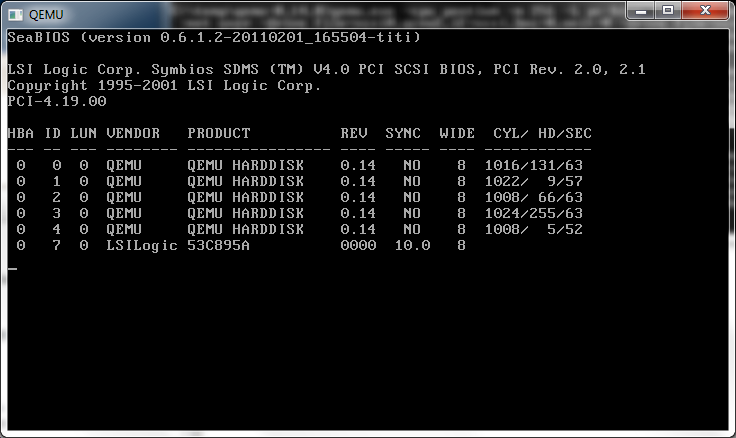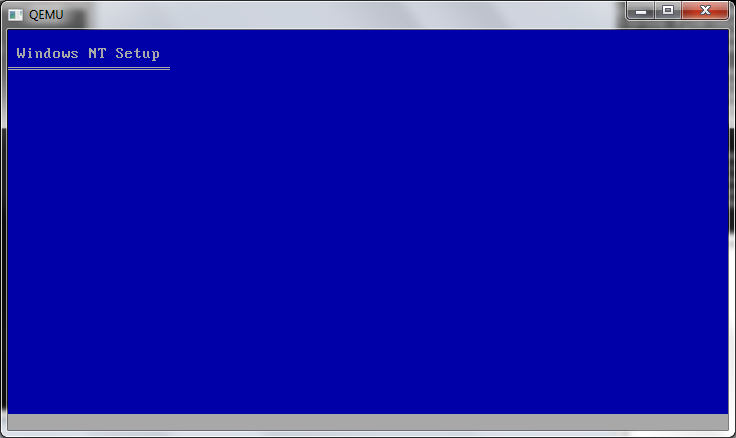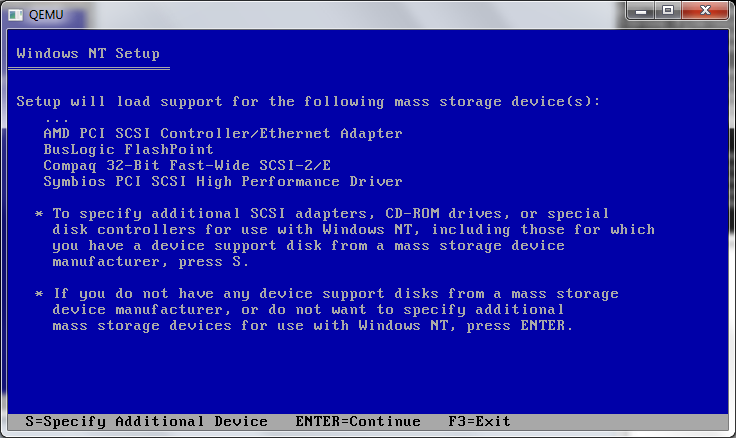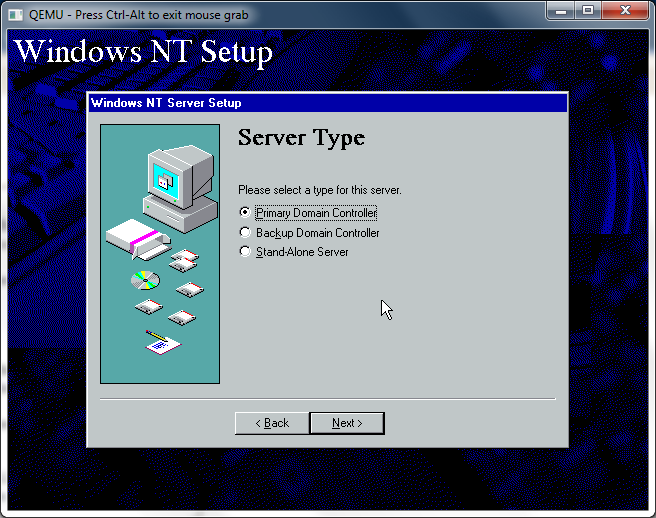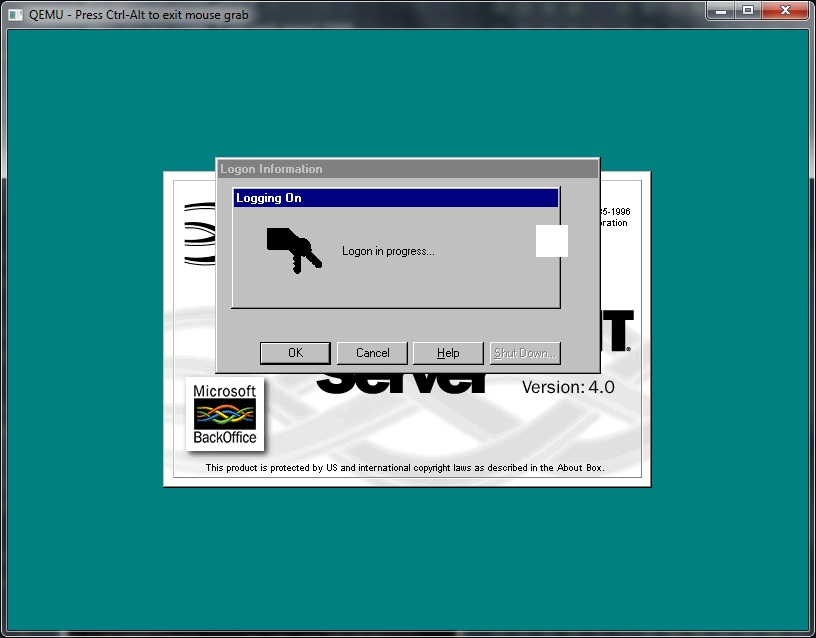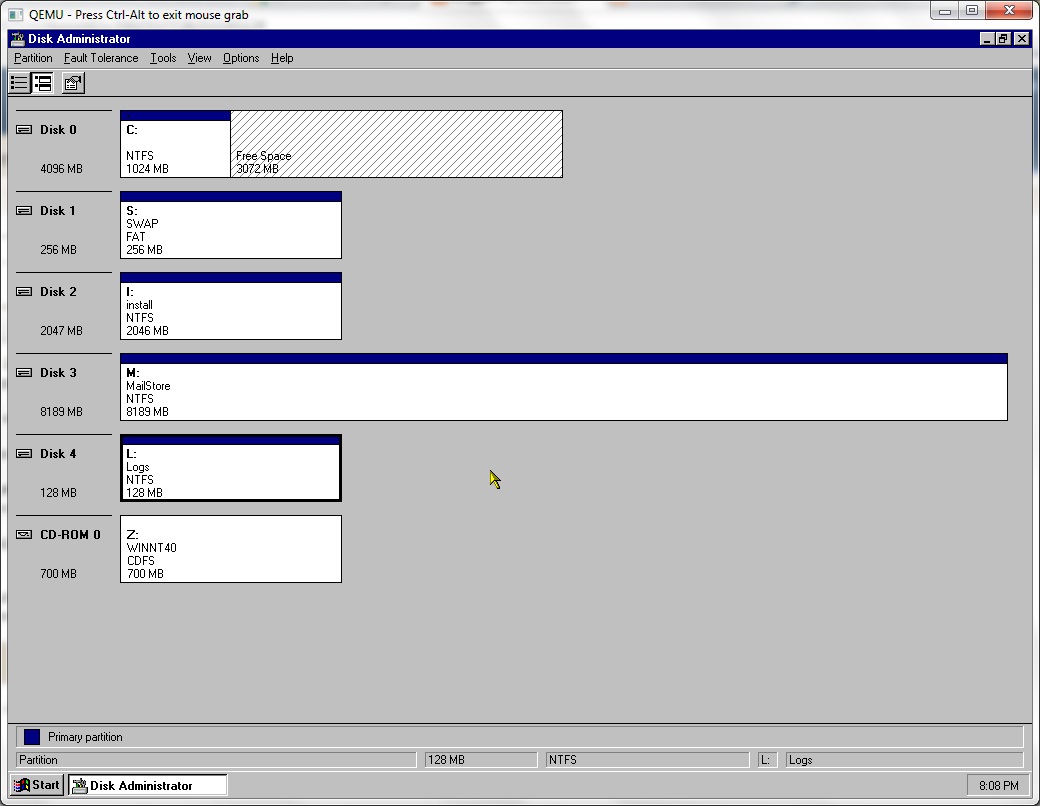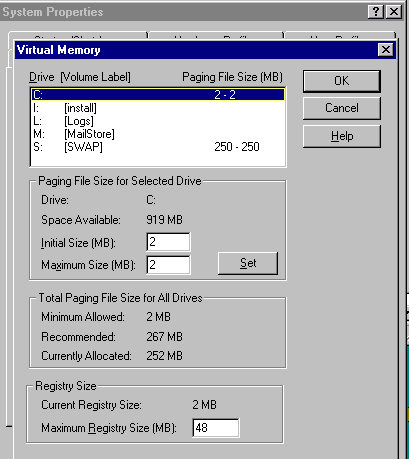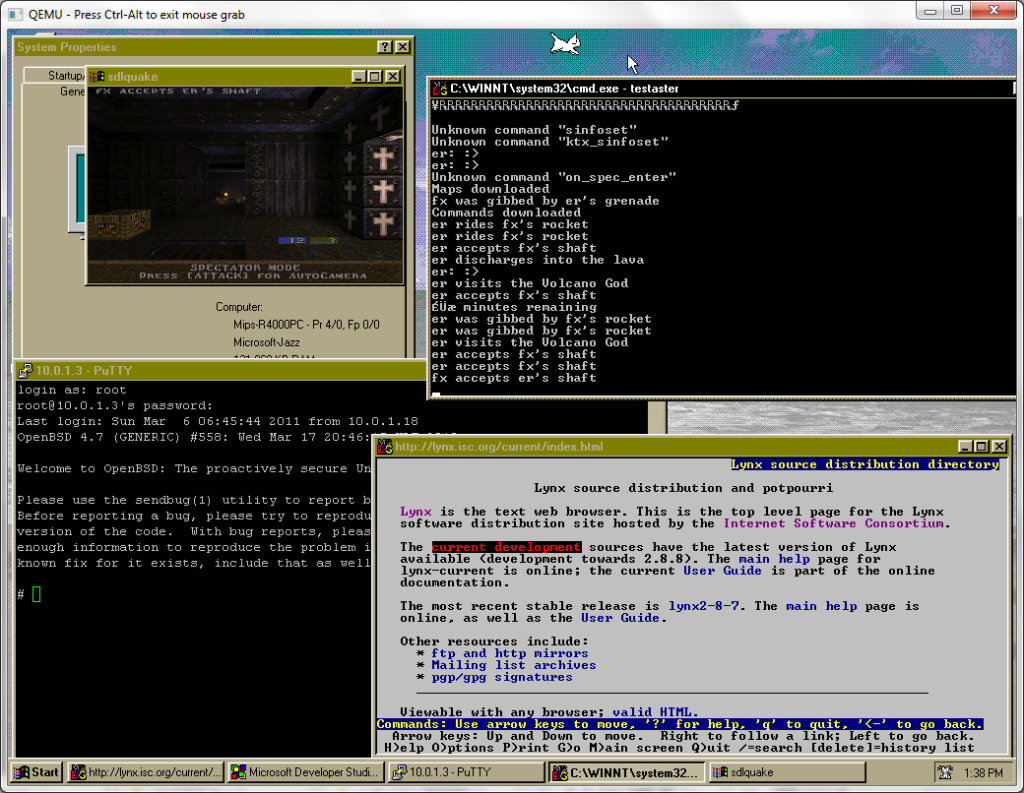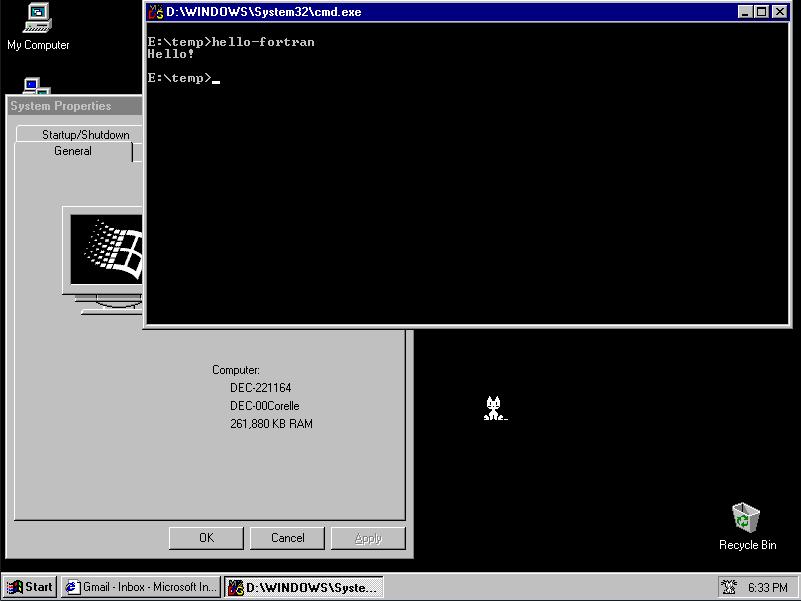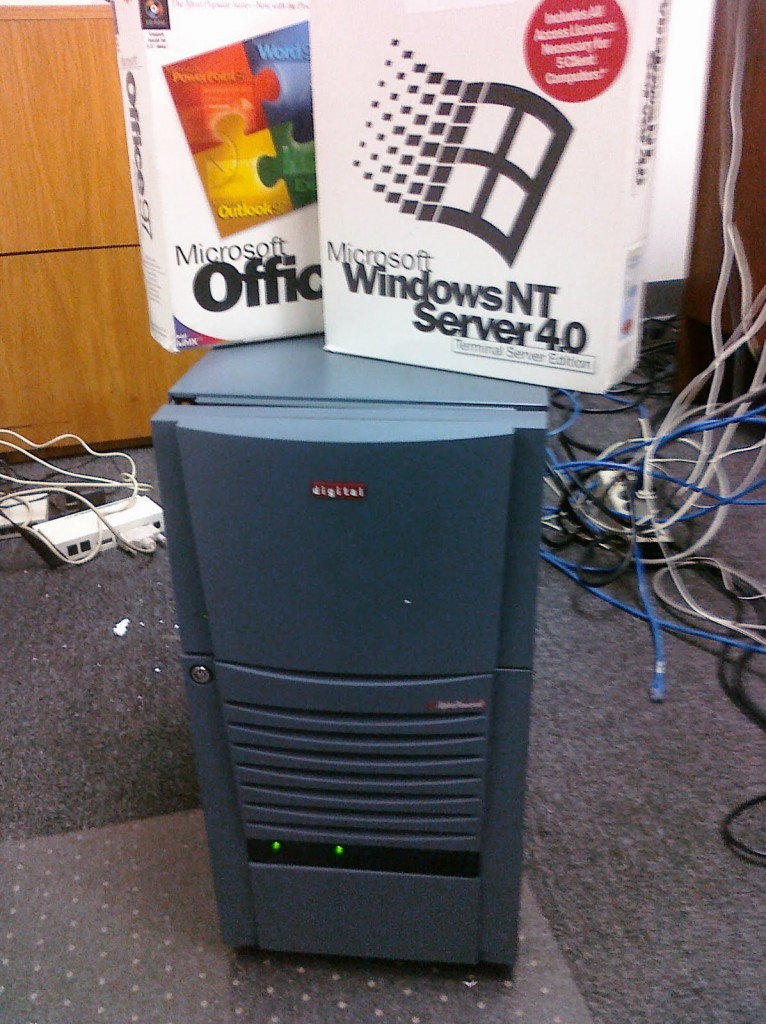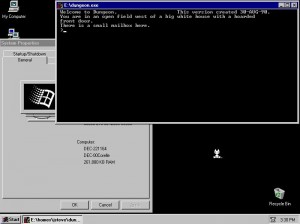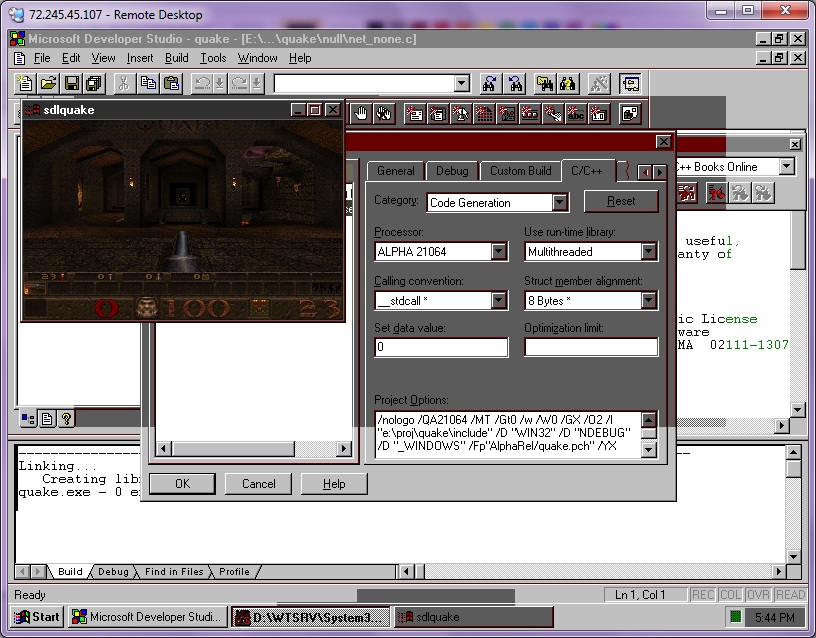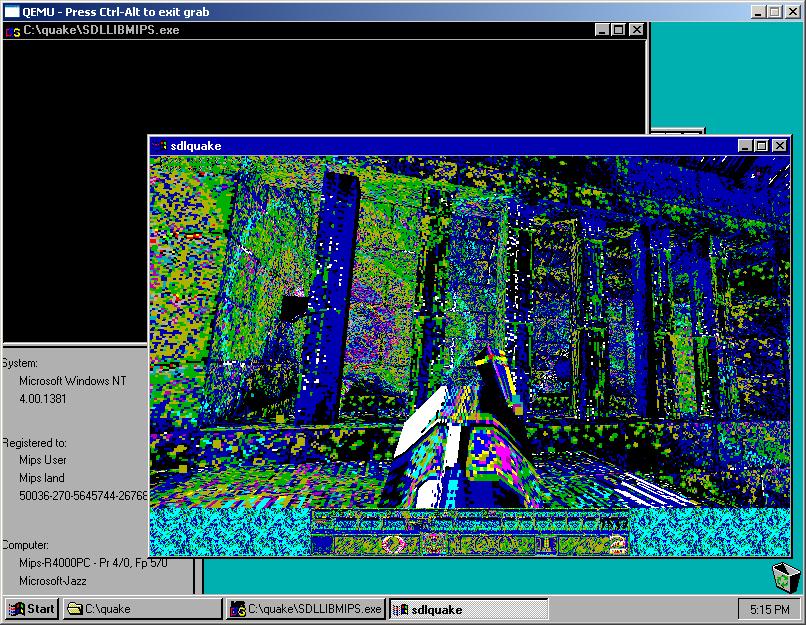So for a test I needed an email server, so I thought I’d setup an Exchange server quickly. Exchange 5.5 runs best on NT 4.0 so I’m going to install it on Qemu 0.14.0. Along the way I ran into a few little gotcha’s so I thought I’d update on how to do this.
qemu.exe -L pc-bios -cpu pentium -hda nt4-server.qcow2 -net nic,model=pcnet -net user -cdrom nt4server.iso -boot d
As you can see on NT 4.0 you now have to set the CPU level. This needs to be done going forward with NT 4.0 as again it’s too old to detect newer CPU’s and gets confused. Also I’d recommend selecting the ‘standard pc’ HAL. Oh sure it may look all nice with a MPS/Uniprocessor, but I’ve found it noticeably slower.
The default cirrus logic driver works at 16bit depths at 800×600 well enough (The hardware mouse pointer doesn’t work so you’ll need to turn on a custom pointer). Another thing is my choice of the AMD PCNet NIC, is that it’s the same that VMWare uses, so you can always run these disks under VMWare if need be (as long as VMWare has IDE disk support, and you convert the disk first!!).
Ok that basically covers an IDE install, but let’s get onto SCSI. Qemu now (it’s been in there for a while..) emulates a SCSI controller, the PCI 53c895a adapter. And I’ve found that you can get it to work with Windows NT 4.0! First you’ll need a driver diskette & BIOS both found at LSI’s webpage. The NT driver is nt896.zip if you’ve gotten the correct one.
Now that I’m going to install exchange, the best practice I’ve found for NT is something like this:
OS DISK 4GB
SWAP DISK 256MB
INSTALLS 2GB
MAIL STORE 8GB
LOGS 128MB
So that’s a bunch of SCSI disks, right? I guess I could build a stripped set but that’d be kind of crazy… so here is how I’m going to do it:
qemu-img.exe create -f qcow2 scsi0.qcow2 4G
Formatting ‘scsi0.qcow2’, fmt=qcow2 size=4294967296 encryption=off cluster_size=0qemu-img.exe create -f raw scsi1.qcow2 256M
Formatting ‘scsi1.qcow2’, fmt=raw size=268435456qemu-img.exe create -f qcow2 scsi2.qcow2 2G
Formatting ‘scsi2.qcow2’, fmt=qcow2 size=2147483648 encryption=off cluster_size=0qemu-img.exe create -f qcow2 scsi3.qcow2 8G
Formatting ‘scsi3.qcow2’, fmt=qcow2 size=8589934592 encryption=off cluster_size=0qemu-img.exe create -f raw scsi4.qcow2 128M
Formatting ‘scsi4.qcow2’, fmt=raw size=134217728
Since the swap & log disk are constantly being written to, it’s best to leave them in the ‘raw’ disk format.
Ok now to install. I know it’s a massive command line but this is how I’m going to kick off the install:
qemu.exe -cpu pentium -m 256 -L pc-bios -net nic,model=pcnet
-net user -drive file=scsi0.qcow2,if=scsi,bus=0,unit=0 -drive file=scsi1.qcow2,
if=scsi,bus=0,unit=1 -drive file=scsi2.qcow2,if=scsi,bus=0,unit=2 -drive file=sc
si3.qcow2,if=scsi,bus=0,unit=3 -drive file=scsi4.qcow2,if=scsi,bus=0,unit=4 -opt
ion-rom 8xx_64.rom -fda lsi.vfd -cdrom nt4server.iso -boot d
And if it’s done right, you’ll notice that now the SCSI bios will be initializing as seen below with a bunch of disks…
Once your NT CD starts to boot up, you’ll see a blue screen like this. It’s important that you hit both F5 and F6 over and over to tell the setup program that you want a custom HAL, along with an install time SCSI driver.
And as I did above, I’ll first select the ‘standard pc’ HAL.
Then You can tell it to load the LSI / Symbios scsi driver, and install will roll through as normal. Since this is going to be an Exchange server, I’m also going to make it a PDC on it’s own domain, since Exchange requires DC functionality.
And from there it is a somewhat normal NT install. I did leave out the messaging stuff, because it’s that ancient “Microsoft Mail” stuff, and it’s somewhat crippled at that.
For the fun of it, if you load 256 colors, you’ll wind up with this:
And all the icons will be blank squares. Not terribly useful. Maybe for low displays the regular VGA would be best…. But again with 16bit and custom pointers (much like an old MIPS issue) it will work enough. 1024x768x16million colors at 43Hz (interlaced) works pretty good too!
Next I fired up the disktool, (diskman) and slapped down a bunch of partitions… I let the swap formatted FAT as I don’t care about it’s crash to crash integrity, but the rest can be NTFS. Also from a boot limitation the first disk is only 1GB out of it’s 4… I don’t know if that matters.
Then into the system tool to move the swap to the ‘s’ drive.
I don’t know if the actual setup of Exchange is all that … interesting so I’ll just leave it to your imagination.

